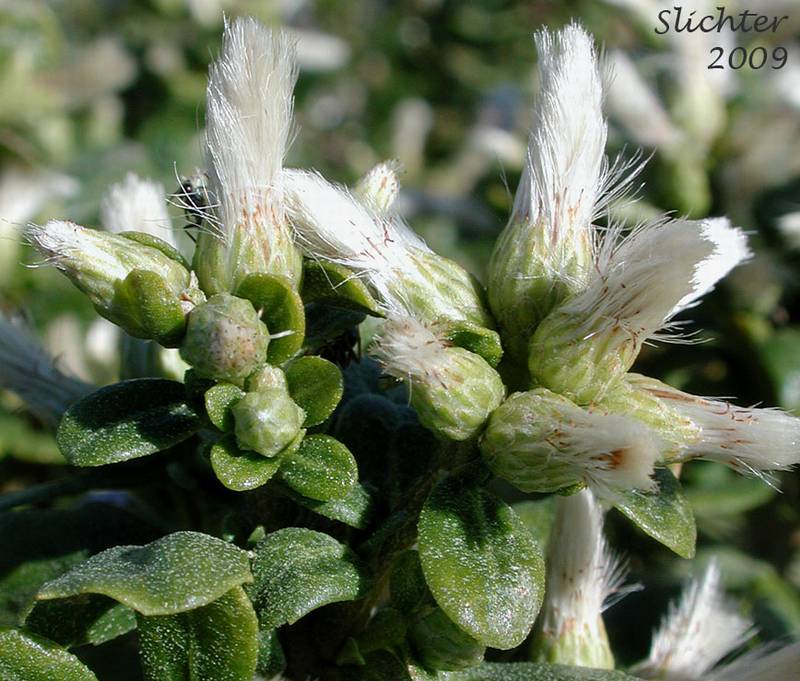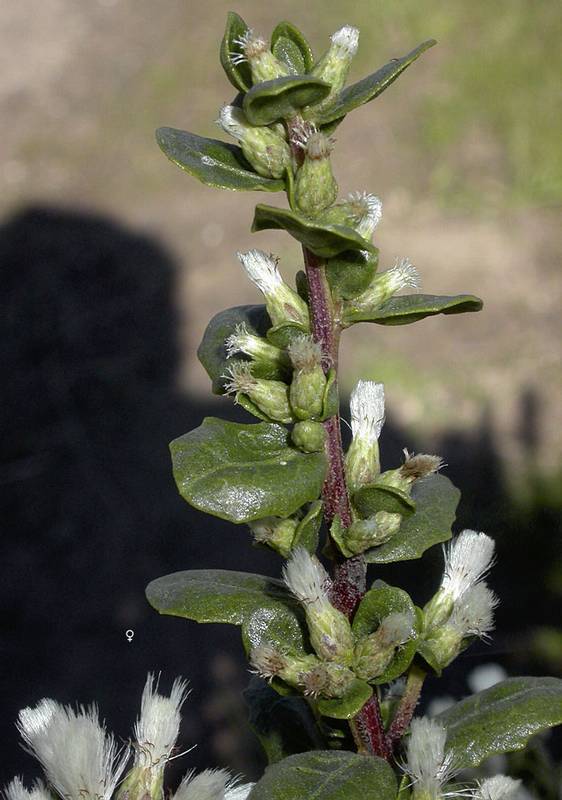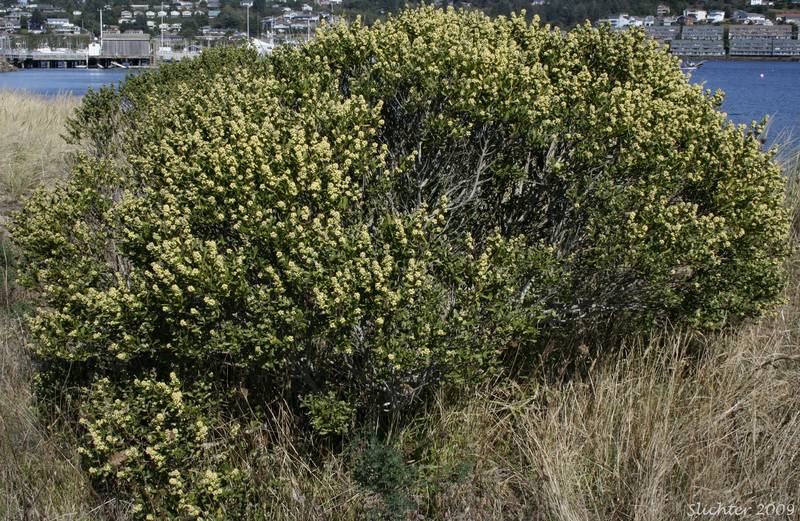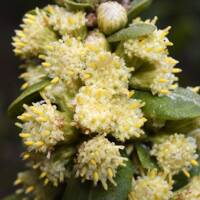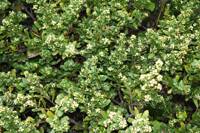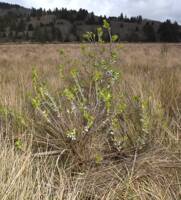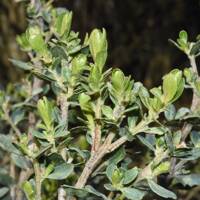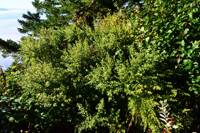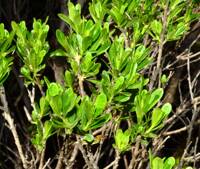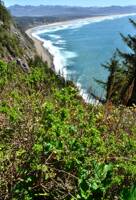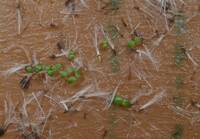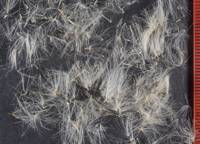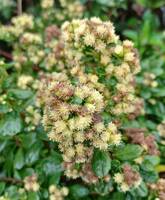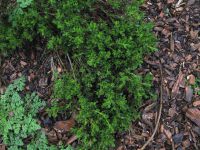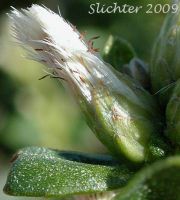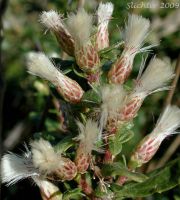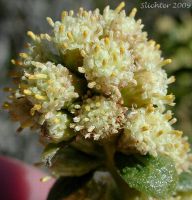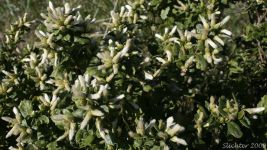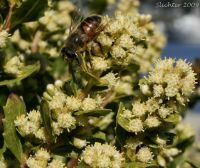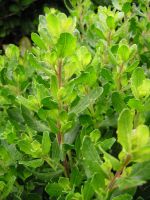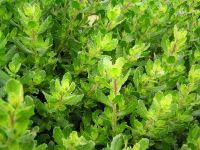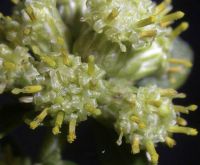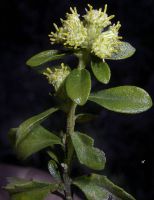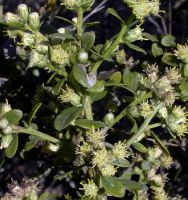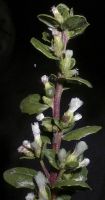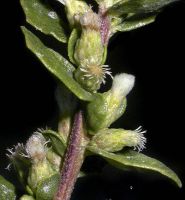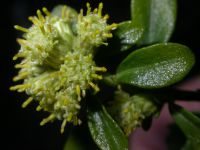Distribution: Occurring west of the Cascades crest in southern Washington; Washington to California, also in New Mexico.
Habitat: Coastal dunes, bluffs, and thickets.
Flowers: August-September
Origin: Native
Growth Duration: Perennial
Conservation Status: Threatened in Washington (WANHP)
Pollination: Bumblebees, bees, flies, wasps, beetles
Perennials, subshrubs, or shrubs, 15–450 cm tall, prostrate and mat-forming to erect and rounded, branches numerous; stems spreading to ascending, dark brown, shiny, striate-angular, glabrous, often somewhat scurfy, usually resinous and sticky.
Leaves present at flowering; sessile or short-petiolate; blades often 1-nerved, sometimes 3-nerved, oblanceolate to obovate, 5–40 × 2–15 mm thick, bases cuneate, margins entire or coarsely dentate, teeth grouped from 3 to 9, faces glabrous, gland-dotted, resinous.
Heads number 100 to 200+, in paniculiform arrays; involucres hemispheric to campanulate; 3.2–5 mm long in staminate, 3–6 mm in pistillate; phyllaries ovate to lanceolate, 1–3 mm, margins yellowish, scarious, medians yellow proximally, green distally, apices obtuse to acute or acuminate, erose, abaxial faces papillose-scurfy; corollas 2.5–3.5 mm long; staminate florets number 20–34, 3–4 mm long; pistillate florets number 19–43.
Cypselae ellipsoid, 1–2 mm, 8–10-nerved, glabrous; pappi 6–9 mm.
Publication: Prodr. 5: 407. 1836.
-
ssp. consanguinea – chaparral broom
 Occurring west of the Cascades crest in southern Washington; southwestern Washington to California, also in New Mexico.
Occurring west of the Cascades crest in southern Washington; southwestern Washington to California, also in New Mexico.
PNW Herbaria: Specimen records of Baccharis pilularis in the Consortium of Pacific Northwest Herbaria database
WA Flora Checklist: Baccharis pilularis checklist entry
OregonFlora: Baccharis pilularis information
E-Flora BC: Baccharis pilularis atlas page
CalPhotos: Baccharis pilularis photos

